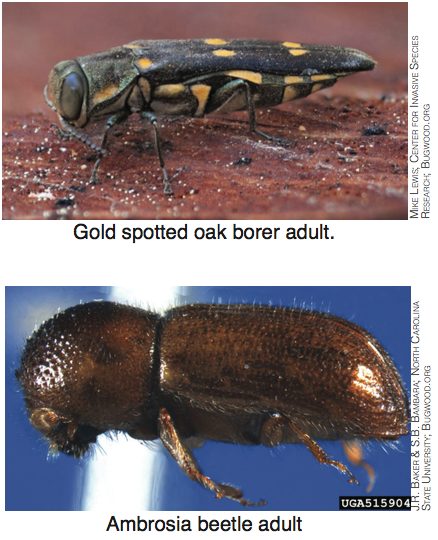Written by Fred Roth, Ph.D. Consulting Arborist | Featured Photo by Robert L Anderson, USDA Forest Service, Bugwood.org

Invasive pests spend part or most of their life cycle within the wood of trees they have killed. Such pests have been associated with the historically destructive Dutch elm disease which wiped out the once prized American elm as a useful street tree. But we don’t need to search the history books to come up with examples of devastating tree problems. Several are occurring in our own “back yards” even as you read this. Some of them are directly destructive, such as the emerald ash borer and Asian long horned borer of the upper Midwest and the gold spotted oak borer currently killing our coast live oaks in San Diego County and more recently Riverside County. Others do their lethal damage by carrying pathogenic fungi that they feed on such as the recently introduced polyphagus shot hole borer which is spreading quickly in southern California and causing rapid death of mature trees of a number of important tree species. Other recently introduced diseases spread by insects are the Thousand Canker Disease of walnuts and Laurel Wilt of a number of species including California bay and avocado.
The problem insects are widening their circle of destruction dramatically, moving much farther and faster than imaginable on their own. They are doing this by hitching rides as the trees they killed are turned into firewood and sold widely. The best way to stop the spread is for everyone to be suspicious of the firewood they purchase. Try to purchase only local firewood and be sure not to move it elsewhere. This may take some discipline as you look around your property for something to make a campfire with next time you go to the beach or to your cabin in the mountains. You don’t want to be responsible for the next disastrous outbreak! Go ahead and enjoy your firewood, just remember:
BUY IT WHERE YOU BURN IT!


